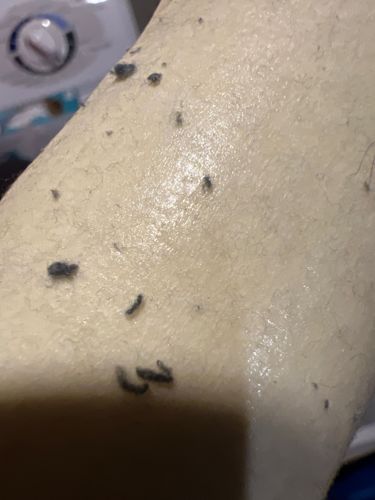Fungus Gnat Larvae, "Drain worms"
Scientific Name: Sciaridae or Mycetophilidae (larvae)
Order & Family: Diptera, Sciaridae/Mycetophilidae
Size: 3-10 mm

Natural Habitat
Moist, decaying organic matter, overwatered soil, drains, compost piles, and areas with high humidity and fungal growth.
Diet & Feeding
Fungus gnat larvae primarily feed on fungi, decaying plant matter, and algae. Some species may also feed on plant roots, especially in high populations.
Behavior Patterns
Larvae are aquatic or semi-aquatic, often found wriggling in moist environments. They are generally slow-moving. Adult fungus gnats are attracted to light and are often seen flying around houseplants. The larvae are typically found in the top inch or two of soil or within moist organic films.
Risks & Benefits
Risks: In large numbers, fungus gnat larvae can damage plant roots, leading to stunted growth or wilting in houseplants and seedlings. While generally harmless to humans, their presence can be a nuisance. They do not bite or transmit diseases to humans. Benefits: They play a role in decomposition by consuming decaying organic matter and fungi, helping to recycle nutrients in certain ecosystems.
Identified on: 10/25/2025